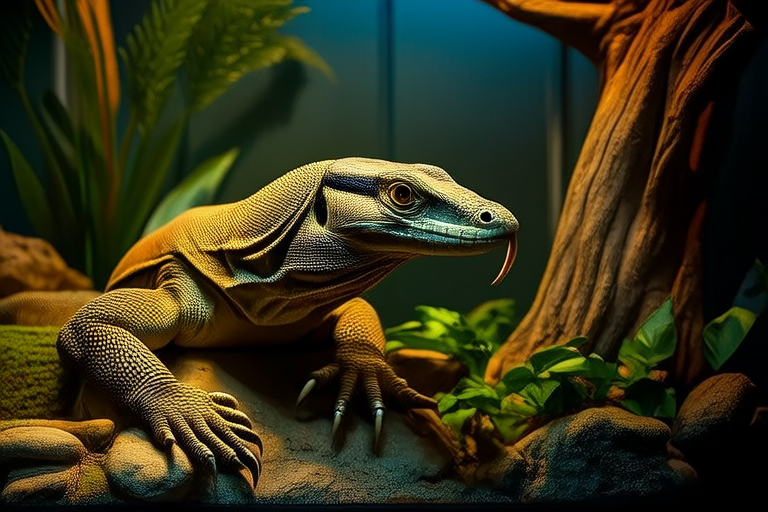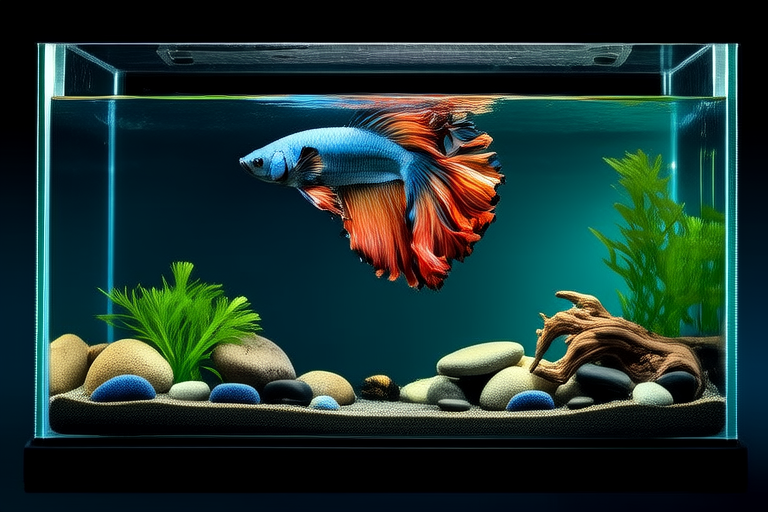
Unleashing the Secrets of the Water Monitor: A Comprehensive Guide
The water monitor (Varanus salvator) is one of the largest lizards in the world, known for its impressive size, agility, and adaptability. This comprehensive guide will take you through the natural habitat, diet, behavior, and unique physical traits of the water monitor. We’ll also cover proper care guidelines for those considering a water monitor as a pet, including housing, feeding, and health considerations. Additionally, we’ll explore the challenges and rewards of owning a water monitor and provide tips for interacting safely and effectively with these fascinating reptiles.
Natural Habitat
Water monitors are native to Southeast Asia, where they thrive in diverse environments ranging from dense tropical forests to mangrove swamps, riverbanks, and coastal areas. These versatile creatures can be found in countries such as India, Pakistan, Sri Lanka, Indonesia, Malaysia, Thailand, and the Philippines. The ideal environment for a water monitor is warm, humid, and rich in vegetation. They are excellent swimmers and spend significant time in or near water bodies, which they use for hunting, thermoregulation, and escaping predators.
Diet
Water monitors are carnivorous and opportunistic feeders, meaning they eat whatever is available in their environment. Their diet includes insects, fish, frogs, birds, eggs, small mammals, and even carrion. In captivity, their diet can be supplemented with commercially available food items like mice, rats, and feeder fish. It’s essential to offer a balanced diet that mimics their natural feeding habits, ensuring they receive all necessary nutrients for optimal health.
Behavior
Water monitors are active, intelligent, and curious animals. They are known for their alertness and ability to react quickly to potential threats. In the wild, they are territorial and may engage in aggressive behaviors when defending their space. However, in captivity, they can become quite docile and even affectionate towards their handlers. Regular interaction and handling can help build trust between the monitor and its keeper, making it easier to manage daily tasks like feeding and cleaning.
Unique Physical Traits
One of the most striking features of the water monitor is its long, powerful tail, which serves multiple purposes. It acts as a rudder while swimming and can be used as a weapon in self-defense. Water monitors also have strong limbs and claws, which aid in climbing and digging. Their keen eyesight and sense of smell allow them to locate prey from considerable distances. Their skin is covered in scales that vary in color and pattern, providing excellent camouflage in their natural habitat.
Proper Care Guidelines
Housing
Providing an appropriate enclosure is crucial for the well-being of your water monitor. The enclosure should be spacious, allowing ample room for movement, swimming, and climbing. A minimum tank size of 6 x 3 x 4 feet is recommended for a juvenile water monitor, with the size increasing as the lizard grows. The enclosure should include a water area for swimming, a basking spot for thermoregulation, and plenty of climbing structures like branches and rocks.
Feeding
As mentioned earlier, water monitors are carnivores and require a varied diet to ensure proper nutrition. In captivity, they can be fed a combination of live prey, frozen-thawed prey, and commercially available supplements. It’s important to monitor their feeding schedule and adjust portion sizes according to their age and activity level. Feeding too much or too little can lead to health issues, so it’s advisable to consult with a veterinarian specializing in reptiles.
Health Considerations
Regular veterinary check-ups are essential for maintaining the health of your water monitor. Common health issues include respiratory infections, parasites, and metabolic bone disease. Proper husbandry, including temperature control, humidity levels, and diet, can prevent many of these problems. Signs of illness in a water monitor may include lethargy, loss of appetite, abnormal shedding, and changes in behavior. Prompt attention to any signs of illness is crucial for effective treatment.
Challenges and Rewards of Owning a Water Monitor
Owning a water monitor comes with several challenges, primarily due to their large size and specific care requirements. They require a significant investment in terms of time, money, and resources. Housing, feeding, and maintaining the health of a water monitor can be demanding. However, the rewards of owning such a magnificent creature are immense. Watching a water monitor grow and thrive under your care is incredibly fulfilling. They are intelligent and can form strong bonds with their keepers, making them a rewarding pet for those willing to meet their needs.
Tips for Interacting Safely and Effectively
Interacting with a water monitor requires patience, respect, and knowledge. Always handle your monitor with care, avoiding sudden movements or loud noises that might startle it. Regular interaction and positive reinforcement can help build trust and make handling easier. When approaching your monitor, move slowly and give it time to acclimate to your presence. Never attempt to handle a monitor if it appears stressed or agitated, as this can lead to bites or scratches.
In conclusion, the water monitor is a fascinating and rewarding pet for those who are prepared to meet its unique needs. By understanding their natural habitat, diet, behavior, and physical traits, you can provide the best possible care for your water monitor. With proper housing, feeding, and health management, you can enjoy a long and healthy relationship with this incredible reptile. Remember to always prioritize safety and respect when interacting with your water monitor, ensuring a positive experience for both you and your pet.





